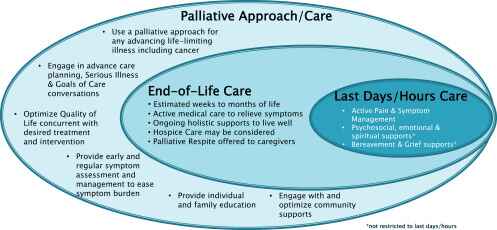A Holistic Approach: Hospice Nursing Assessment vs. Hospital/Nursing Home Assessment
Published on November 17, 2023
Updated on July 12, 2024
Published on November 17, 2023
Updated on July 12, 2024

Table of Contents
As an experienced hospice nurse, I understand the importance of providing compassionate care that maximizes patient comfort and removes avoidable distress. The hospice nursing assessment differs from assessments conducted in hospitals or nursing homes, where the focus is often on normal versus abnormal vital signs and lab values. In this article, I will compare the hospice nursing assessment to assessments done in other healthcare settings, providing examples highlighting the unique approach of hospice nursing.
Hospital/Nursing Home Assessment: In a hospital or nursing home setting, the primary focus of pain assessment is often on quantifying pain using numeric scales and evaluating the effectiveness of pain management interventions through vital signs and lab values.
Hospice Assessment: The hospice nurse’s approach to pain assessment is centered on the patient’s subjective experience and overall well-being. The assessment includes:
By adopting this comprehensive approach, the hospice nurse can develop an individualized pain management plan that prioritizes patient comfort and addresses their unique needs.
Hospital/Nursing Home Assessment: In acute care settings, nutritional assessment often involves evaluating dietary intake, monitoring weight changes, and analyzing lab values to determine nutritional status and guide interventions.
Hospice Assessment: The hospice nurse’s approach to nutritional assessment recognizes that maintaining nutrition is important for comfort and quality of life, but it prioritizes the patient’s autonomy and personal preferences. The assessment includes:
Hospice nurses understand that the focus shifts from aggressive nutritional interventions to providing comfort and honoring the patient’s choices.
Hospital/Nursing Home Assessment: In acute care or nursing home settings, psychosocial assessment may be brief and focused on identifying major mental health concerns using standardized screening tools.
Hospice Assessment: The hospice nurse’s psychosocial assessment addresses the emotional, social, and spiritual needs of the patient and their family. The assessment includes:
Hospice nurses recognize the importance of addressing the psychosocial aspects of end-of-life care to help patients and families navigate the complex emotions associated with terminal illness.
Hospital/Nursing Home Assessment: In hospital or nursing home assessments, the focus is often on identifying and treating specific symptoms based on objective data from vitals and lab values.
Hospice Assessment: The hospice nurse’s approach to symptom management involves a holistic evaluation of the patient’s comfort. The assessment includes:
Hospice nurses prioritize patient comfort by addressing symptoms promptly and tailoring interventions to enhance quality of life.
Hospital/Nursing Home Assessment: In hospital or nursing home assessments, spiritual and emotional well-being may receive limited attention or be addressed through referrals to chaplains or mental health professionals.
Hospice Assessment: The hospice nurse recognizes the importance of spiritual and emotional well-being in end-of-life care. The assessment includes:
Hospice nurses understand the significant impact of addressing spiritual and emotional needs on overall well-being during the end-of-life journey.
During each nursing visit, hospice nurses prioritize a comprehensive assessment that maximizes patient comfort and addresses avoidable distress. Key areas assessed include:
By focusing on these key areas, hospice nurses provide holistic care that addresses patients’ and their families’ physical, emotional, and spiritual needs.
In every hospice nursing visit, the focus remains on key areas that define holistic care: pain and symptom management, emotional and psychosocial well-being, effective communication, spiritual support, and family education. These areas collectively contribute to a comprehensive approach that addresses the multifaceted needs of both patients and their families.
The essence of hospice nursing assessments lies in embracing a holistic perspective, prioritizing individual experiences, and providing personalized care beyond medical parameters. This approach ensures that patients and their families receive support that attends to physical needs and recognizes the intricate emotional and spiritual dimensions of the end-of-life journey.
What Hospice Nurses Should Assess Every Visit
Dietary Changes through the Dying Process
Article: 4 End-of-Life Care (Hospice Care) Nursing Care Plans
Journal Article: Nursing and the Future of Palliative Care
Journal Article: The Role of Hospice Care in the Nursing Home Setting
Journal Article: Hospice care in US nursing homes: benefits and barriers
Between Life and Death: A Gospel-Centered Guide to End-of-Life Medical Care
Providing Comfort During the Last Days of Life with Barbara Karnes RN (YouTube Video)
Preparing the patient, family, and caregivers for a “Good Death.”
Velocity of Changes in Condition as an Indicator of Approaching Death (often helpful to answer how soon? or when?)
The Dying Process and the End of Life
Gone from My Sight: The Dying Experience
The Eleventh Hour: A Caring Guideline for the Hours to Minutes Before Death